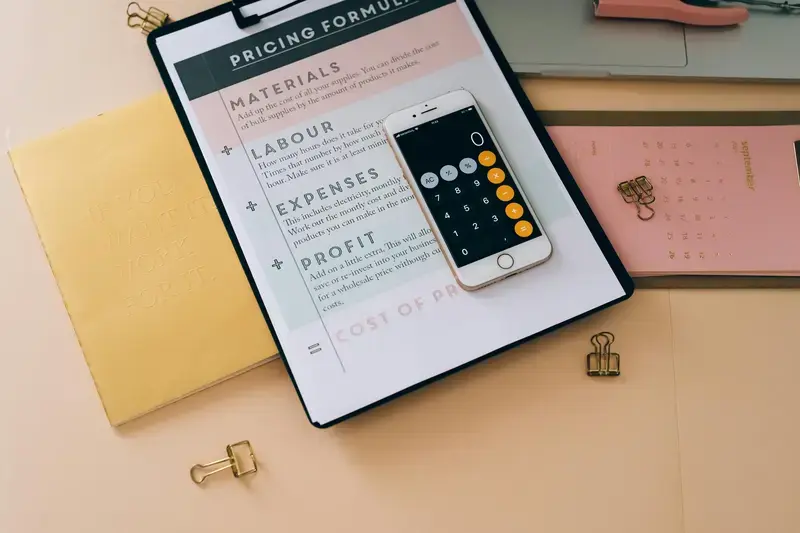How Do Small Apps Compare to Big App Costs?
A small healthcare startup recently contacted us wanting to build a simple symptom checker app. Their budget? Around £15,000. Meanwhile, a large NHS trust was looking at developing a comprehensive patient management system with AI diagnostics, telemedicine capabilities, and full EHR integration—their budget started at £500,000. Both are healthcare apps, but the difference in scope, complexity, and yes, cost, is absolutely massive. This perfectly illustrates why understanding app size and its impact on development expenses is so important for anyone planning a mobile project.
When people ask me about app development costs, I always tell them its not just about the final product you see on your phone. The size of your app affects everything—from the number of developers you'll need to the time it takes to build, test, and launch. Small apps might have 3-5 core features and take a few months to develop, while large apps can have dozens of interconnected features and take over a year to complete. The costs don't scale linearly either; they compound as complexity increases.
The difference between small and large app costs isn't just about adding more features—it's about the exponential increase in complexity, integration requirements, and the expertise needed to deliver a stable, scalable solution.
What makes this topic particularly tricky is that many business owners underestimate how quickly a "simple" app idea can grow into something much larger once you start considering user experience, security requirements, and business objectives. Understanding these cost differences upfront helps you make informed decisions about scope, timeline, and budget allocation. Whether you're building your first app or expanding an existing platform, knowing where your project sits on the size spectrum is the first step to realistic planning.
Understanding App Size and Development Scope
When clients first approach me about building an app, one of the biggest misconceptions I encounter is the idea that app "size" simply means how much storage space it takes up on your phone. That's not what we're talking about here at all—it's about the scope, complexity, and depth of what your app actually does.
A small app typically focuses on one core function or solves a single, specific problem. Think of a tip calculator, a simple weather app, or a basic note-taking tool. These apps usually have 3-5 main screens, basic user interfaces, and don't require complex backend systems or integrations with multiple third-party services. The development scope is contained and predictable.
Large apps, on the other hand, are more like digital ecosystems. They handle multiple user types, complex workflows, real-time data processing, and often integrate with numerous external services. Social media platforms, banking apps, or comprehensive project management tools fall into this category. These require extensive backend infrastructure, sophisticated security measures, and can have dozens or even hundreds of different screens and user flows.
Key Factors That Define App Scope
- Number of user types and permission levels
- Integration requirements with external systems
- Real-time features like messaging or live updates
- Data complexity and storage requirements
- Security and compliance needs
- Custom animations and advanced UI elements
The scope directly impacts everything from development time to team size to ongoing maintenance costs. A simple app might take 2-3 months with a small team, whilst a large-scale app could require 12-18 months with multiple developers, designers, and specialists working together. Understanding this scope upfront is absolutely critical for setting realistic expectations and budgets.
Breaking Down Small App Development Costs
When I talk to clients about small app costs, I always start with a reality check—what exactly counts as a "small" app? In my experience, we're looking at apps with basic functionality, maybe 3-5 core features, and straightforward user flows. Think simple calculators, basic to-do lists, or single-purpose utilities. These aren't the apps that'll change the world, but they serve their purpose well and don't break the bank.
The beauty of small apps lies in their simplicity. You're typically looking at a development timeline of 2-4 months with a small team—maybe just a developer and a designer. No complex backend systems, no intricate user management, and definitely no AI integration! The costs usually range from £8,000 to £25,000, depending on platform choice and design requirements.
Core Cost Components for Small Apps
Let me break down where your money actually goes when building a small app. The biggest chunk—around 60-70% of your budget—goes straight to development work. This includes coding, testing, and getting everything ready for the app stores.
- Development and coding (60-70% of budget)
- UI/UX design work (15-25% of budget)
- App store submission and setup (5-10% of budget)
- Basic testing and quality assurance (10-15% of budget)
- Project management and communication (5-10% of budget)
Design work takes up the next biggest portion—you still need your app to look professional and function smoothly, even if it's simple. The remaining costs cover app store fees, basic testing, and project coordination. Sure, its not glamorous work, but someone needs to make sure everything actually works before users get their hands on it!
Start with a single platform (iOS or Android) to keep initial costs down. You can always expand to the other platform once you've validated your concept and generated some revenue.
Large App Development Investment Requirements
Right, let's talk about the big leagues. When we're looking at large app development projects, we're talking about investments that can range from £150,000 to well over £1 million. I know that sounds scary, but there's good reason for these numbers—and honestly, they're often justified by the complexity involved.
Large apps typically require teams of 15-25 developers working for 12-18 months. That's not just developers either; we're talking about specialised roles like backend architects, DevOps engineers, security specialists, and dedicated QA teams. Each of these professionals commands premium rates because they're solving complex problems that most developers simply can't handle.
What Makes Large Apps So Expensive?
The infrastructure alone can cost tens of thousands before you write a single line of code. Large apps need robust cloud architecture, content delivery networks, advanced security protocols, and often custom integrations with existing enterprise systems. When you're dealing with enterprise solutions, these integration requirements can significantly impact your budget.
- Enterprise-grade security and compliance requirements
- Custom backend architecture and database design
- Integration with multiple third-party systems
- Advanced analytics and reporting capabilities
- Multi-platform deployment with custom features
- Extensive testing across devices and user scenarios
But here's what many people don't realise—the development cost is often just the beginning. Large apps require ongoing investment in server infrastructure, security updates, and feature enhancements. You're looking at annual maintenance costs of 15-25% of your initial development investment. That's before we even talk about marketing budgets, which for large apps can easily match the development costs.
The key thing to remember? Large apps aren't just scaled-up small apps. They're completely different beasts that require different approaches, different expertise, and yes, significantly different budgets.
Feature Complexity Impact on Pricing
Here's where things get really interesting—and where most clients get their biggest surprises when we start talking numbers. The difference between a simple login system and a multi-factor authentication setup with biometric security isn't just a few extra lines of code; it's weeks of additional development time, third-party integrations, and rigorous testing protocols.
I've worked on apps where adding what seemed like a "simple" chat feature turned into a three-month project involving real-time messaging infrastructure, push notifications, media sharing, and moderation tools. Then there's the backend complexity you don't see—message encryption, server scaling, data storage, and compliance requirements. Each layer adds cost, but more importantly, each layer adds exponential complexity to testing and maintenance.
Basic vs Advanced Feature Pricing
A basic user profile with name and photo? That's straightforward. But when clients want social media integration, location services, preference matching algorithms, and privacy controls—well, now we're talking about a completely different scope. The pricing jumps from hundreds of pounds to thousands, sometimes tens of thousands.
The most expensive features are often the ones that look simplest to users, because that simplicity requires enormous technical sophistication behind the scenes
Payment processing is another perfect example. A simple "buy now" button might cost a few hundred pounds to implement with Stripe. But add subscription management, multiple currencies, tax calculations, refund handling, and compliance with financial regulations across different countries? You're looking at months of development work. The feature complexity doesn't just affect the initial build—it impacts every future update, every security patch, and every new compliance requirement that comes down the line.
Development Team Size and Timeline Differences
One of the biggest factors affecting your app budget? The size of team you'll need and how long they'll be working on your project. It's honestly one of the most misunderstood aspects of app development—clients often think adding more people speeds things up, but that's not always true.
For a small app, you might get away with a lean team of 3-4 people: a developer who can handle both iOS and Android (using React Native or Flutter), a designer, a project manager, and maybe a backend developer if you need server functionality. Timeline wise, you're looking at 8-16 weeks depending on complexity. The team can move fast because there's less coordination needed and fewer moving parts to manage.
Team Composition Breakdown
| App Size | Team Members | Typical Timeline | Monthly Cost Range |
|---|---|---|---|
| Small App | 3-4 people | 8-16 weeks | £15,000-£25,000 |
| Large App | 8-15 people | 6-18 months | £60,000-£150,000 |
Large apps are a different beast entirely. You're looking at separate iOS and Android developers, multiple backend engineers, UI/UX specialists, a DevOps engineer, QA testers, and senior architects. That's easily 8-15 people working for 6-18 months—sometimes longer if the scope keeps expanding (which it usually does!).
Here's what clients don't always understand: more people means more communication overhead. You spend time coordinating between teams, managing dependencies, and making sure everyone's working towards the same vision. A feature that takes one person two days might take a team of five people a full week when you factor in all the coordination required.
The timeline difference isn't just about complexity either—it's about risk management. Large apps need more testing phases, more review cycles, and more time for integration between different components. You can't rush these processes without compromising quality.
Ongoing Maintenance and Update Costs
Here's something most people don't realise until its too late—launching your app is just the beginning. The maintenance costs afterwards? They're where small and large apps really start to show their differences, and honestly, it can be quite shocking.
Small apps typically need around 15-20% of their original development cost each year for maintenance. That covers bug fixes, OS updates, and basic security patches. Simple enough, right? But here's where it gets interesting—large apps often need 25-35% of their initial investment annually. Why? Because they've got more moving parts, more integrations that can break, and frankly, more users complaining when something goes wrong!
What Drives These Maintenance Costs?
Apple and Google release major OS updates every year, and guess what? Your app needs to keep up or risk being removed from the app stores. For small apps, this might mean a week's worth of updates; for large apps with complex features, we're talking months of work. I've seen enterprise apps require complete rewrites just to stay compatible.
Security updates are another big factor. Small apps with basic functionality face fewer security risks, but large apps handling sensitive data need constant monitoring and patches. The difference in annual security costs alone can be 3-4 times higher for complex applications.
Budget at least 20% of your development cost annually for maintenance, but increase this to 30-40% if you're building something complex with multiple integrations or handling sensitive user data.
The scaling challenge is real too—as your user base grows, so do your server costs, support requirements, and the complexity of updates. What starts as a small app maintenance budget can quickly balloon if your app takes off unexpectedly.
I've watched countless clients start with small app budgets and gradually scale up as their business grows—and honestly, it's one of the most rewarding parts of what I do. The key is planning for growth from day one, even when your initial budget is tight.
Most successful apps don't start big. They begin with a focused feature set, prove their concept, then expand. But here's what I've learned after years of helping clients scale: you need to make smart architectural decisions early on that won't completely break the bank later when you want to add features.
Smart Scaling Strategies
When we're building a small app with big ambitions, there are specific approaches that work well. First, we focus on modular development—building components that can be expanded rather than rebuilt. It costs slightly more upfront but saves thousands down the line.
Second, we plan the database structure and API architecture to handle future features. Building a scalable backend architecture from the start prevents costly rewrites later when you need to support more users and features.
- Start with core features that prove your concept
- Build scalable backend architecture from the beginning
- Plan user analytics and feedback systems early
- Budget for iterative improvements based on user data
- Consider phased feature releases over time
The typical scaling pattern I see is: start with £15-30k for an MVP, then add £5-15k phases every 3-6 months based on user feedback and business growth. This approach spreads costs over time while ensuring you're always building what users actually want—not what you think they want.
Remember, scaling isn't just about adding features; it's about growing your user base and revenue alongside your app's complexity.
Hidden Costs That Affect All App Sizes
Right, let's talk about the stuff nobody warns you about when you're planning your app budget. I mean, you've got your development costs sorted, you know what features you want—but then these sneaky expenses start popping up like weeds. And honestly? They catch everyone off guard, whether you're building a simple utility app or the next big social platform.
App store fees are the obvious ones, sure. Apple takes their 30% cut (15% if you're under a million in revenue), Google does the same. But what about the testing devices? You'll need multiple iPhones, Android phones, tablets—different screen sizes, different operating system versions. One client of mine thought they could test everything on their personal iPhone. That was a painful lesson when their app looked terrible on older Android devices.
Legal and Compliance Surprises
Privacy policies, terms of service, GDPR compliance—this stuff isn't optional anymore. You're looking at legal fees even for basic apps. And if you're handling any user data (which most apps do), you need proper data protection measures. Understanding how privacy laws affect your app approval is crucial for budgeting both time and legal costs.
The real shock comes when you realise that a simple photo-sharing app needs the same legal groundwork as a banking application when it comes to user privacy
Then there's the infrastructure costs that scale with success. Your small app might start on a basic server plan, but what happens when you get featured in the app store? I've seen apps crash within hours because they couldn't handle the traffic spike. Cloud hosting bills can go from £50 a month to £500 overnight—and that's actually a good problem to have, but you need to budget for it. Analytics tools, crash reporting, push notification services—they all start free but charge more as your user base grows. It's the price of success, really.
Conclusion
Right, let's wrap this up with what really matters when you're deciding between building a small app or going big from the start. After years of helping clients navigate these decisions, I can tell you there's no magic formula—but there are some clear patterns that emerge.
Small apps typically run between £5,000-£25,000, whilst large apps can easily hit £100,000+ and sometimes much more. But here's what I've learned: the size of your initial budget doesn't determine your app's success. I've seen simple apps with basic features generate millions in revenue, and I've watched companies pour massive budgets into complex apps that nobody wanted to use.
The key is matching your investment to your actual needs and market reality. If you're testing a new idea or serving a specific niche, starting small makes perfect sense. You can always add features later based on real user feedback. But if you're entering a competitive market where users expect sophisticated functionality, you might need that larger investment upfront.
What surprised me most over the years? It's not the development costs that kill apps—it's the ongoing expenses people don't plan for. Marketing, updates, server costs, and support add up quickly regardless of whether you start small or big.
My advice? Be honest about what you actually need right now, not what you think you might need in two years. Build something people will use today, then grow it based on real data and feedback. That approach works whether you're spending £10,000 or £200,000. The apps that succeed aren't necessarily the ones with the biggest budgets—they're the ones that solve real problems for real people.
Share this
Subscribe To Our Learning Centre
You May Also Like
These Related Guides

How Much Does Psychology Driven App Development Cost?

How Much Does It Cost To Build An Enterprise Mobile App?



